My Design Ideas: Draped Concrete Cloth Furniture
While experimenting with concrete as a media I have realized some very unique potentials for it’s use to create forms. Combining cement with fibre in the form of fabric allows forming without the traditional use of a concrete mold. Come, join me in this journey… My goal: design and make some Draped Concrete Cloth Furniture.

As a maker and artist I especially love it when the media I’m working with gives me lots of design possibilities as well and not having to acquire use a lot of large tools. Flexible concrete cloth has endless design possibilities. As well as architects, industrial designers and crafters love working with concrete and especially concrete cloth. This revolutionary material can be formed into any required shape. True that the commercial types can help build large architectural structures or aid in other

What is Concrete cloth?
A woven or knitted fabric has cement already between the fibres that will become very hard once wetted and cured. The DIY version would be quite similar but mean the dipping of the fabric into a slurry of cement; the end product is the same. UK company Concrete Canvas have won an award for Material of the Year by materials consultancy Material ConneXion for their cement-impregnated fabric.
Commercial concrete cloths are available that have the cement impregnated into the cloth meaning only water needs to be available. This makes it very versatile in situations that don’t allow the usual form making and pouring. How clever! Concrete draping allows much more creativity!

I discovered this form of sculpting concrete when I dipped my up-cycled fleece to make my Step Spook. I have also realized how well this form of concrete lasts, even in outdoor situations. So how can I further use this method?
Industrial Design Options:
I find extra satisfaction designing with this method since I taught perspective drawing courses that included Industrial Design. That marvellous career encompasses the design of all the objects we use on a daily basis whether household objects or even furniture.

Design has always been my passion and being able to create things that are not only beautiful but also functional is very fulfilling. To make The Faux Bois Chair I also used some of the concrete draping technique over a bulked up iron frame.
Why Use Draped Concrete Cloth?
My main reason for using this technique is that a flat fibre surface can become a 3D form without a mold. Working with fabrics to make clothing or other sewn forms is not new to me. My skills of working with fabric helps me visualize the shapes needed; similarly to sewing and fibre arts. Make small scale models to test various shapes and forms.
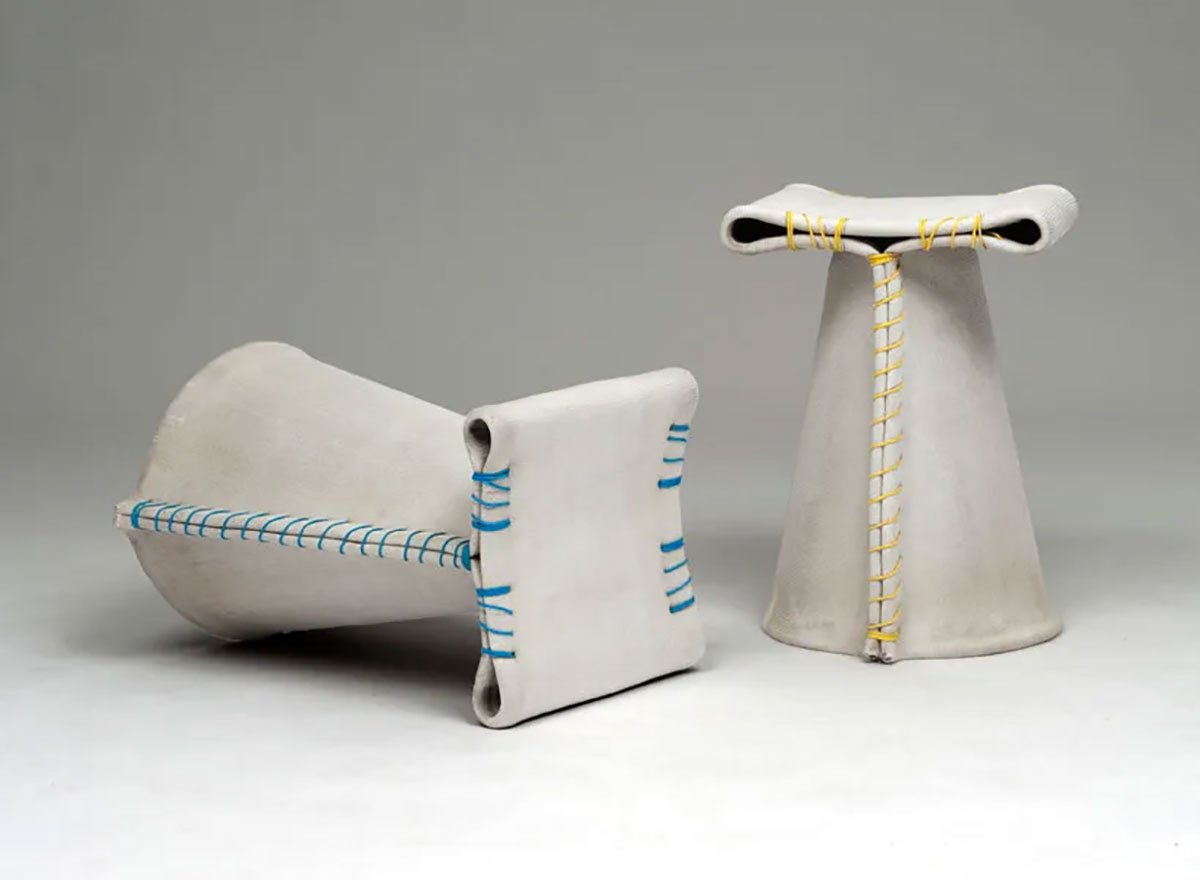
Here are some amazing design winners:
Florian Schmid has used this principle in his stool designs as well. Forms made of wood support the concrete cloth and can be removed after it’s curing. The stitched sewing brings out the charm and suggests fabric even though it is an extremely hard surface.
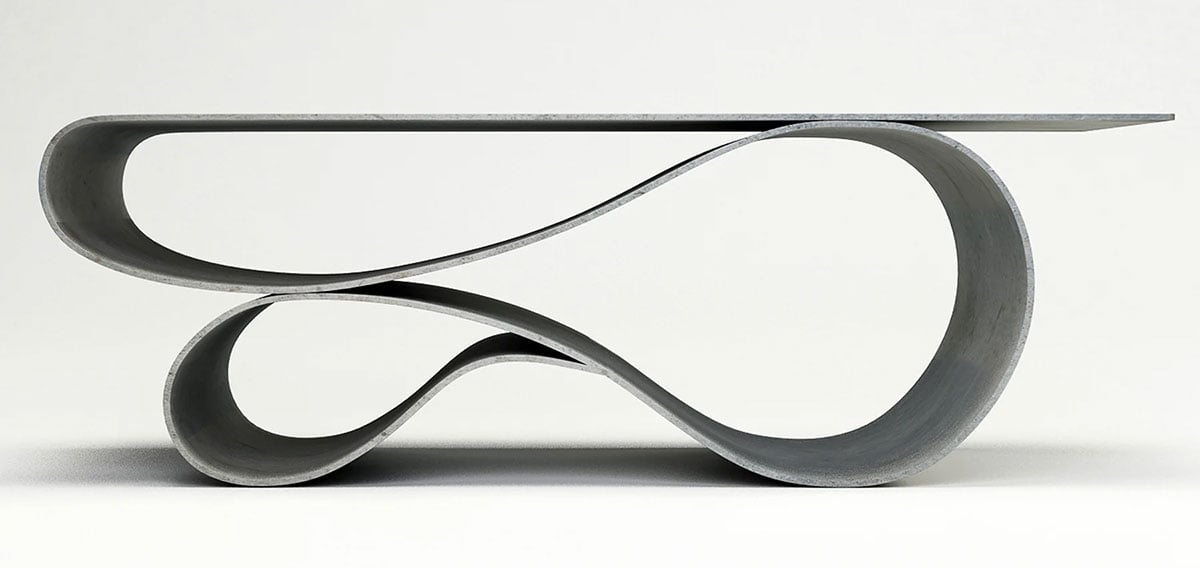
Depending on the structure used to support the wetted concrete cloth, the final form can be quite unusual. Neal Aronowitz has created a Concrete Canvas collection. This ‘Whorl Table’ (and also Enso Table) is quite striking even though quite simple. The industrial feel of the concrete finish is also quite sought after these days in many objects not just architecture.
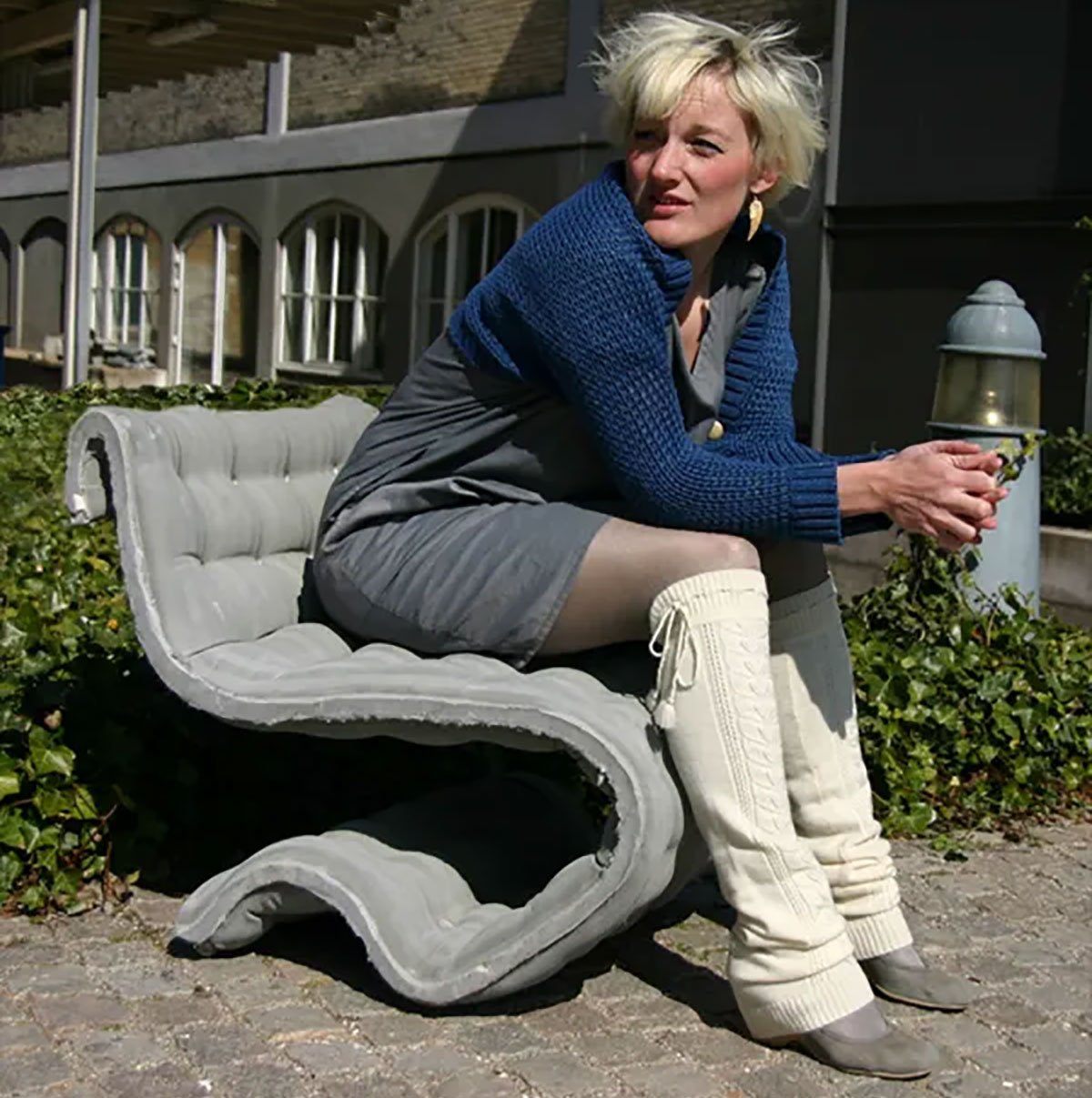
Anne-Mette Manelius has created a ‘soft’ chair. It is anything but soft as the button tufting is giving that illusion. The more I allow freedom in my imagination the more unique ideas develop.

Some of the furniture pieces can be as simple as a well-formed flat cement fabric piece. The Award-winning Memoria Chair uses fabric in radical new way by magically suspending it in place.
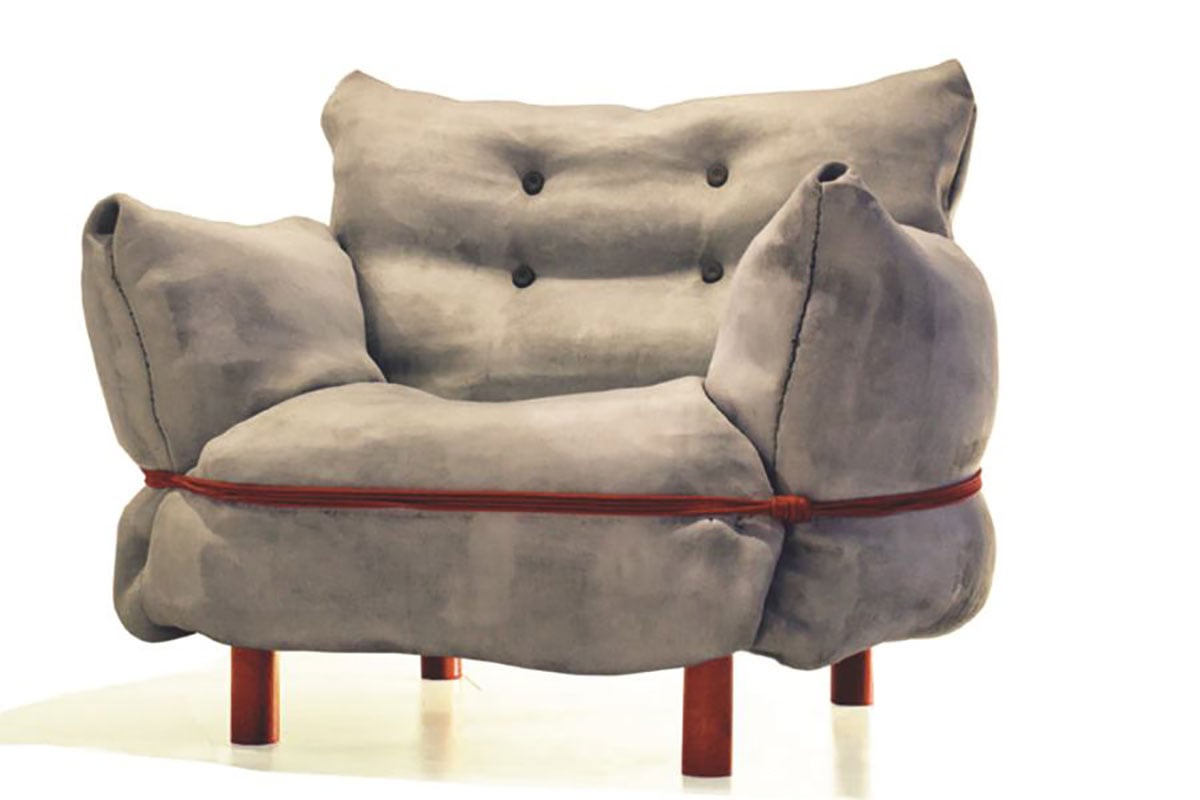
Maria Gustavsson, a Swedish engineer and industrial designer, has created concrete furniture using Concrete Canvas, a fabric that is infused with portland cement. It may look quite pillowy but does not have any soft filling, but rather a hard outer shell over hollow forms.
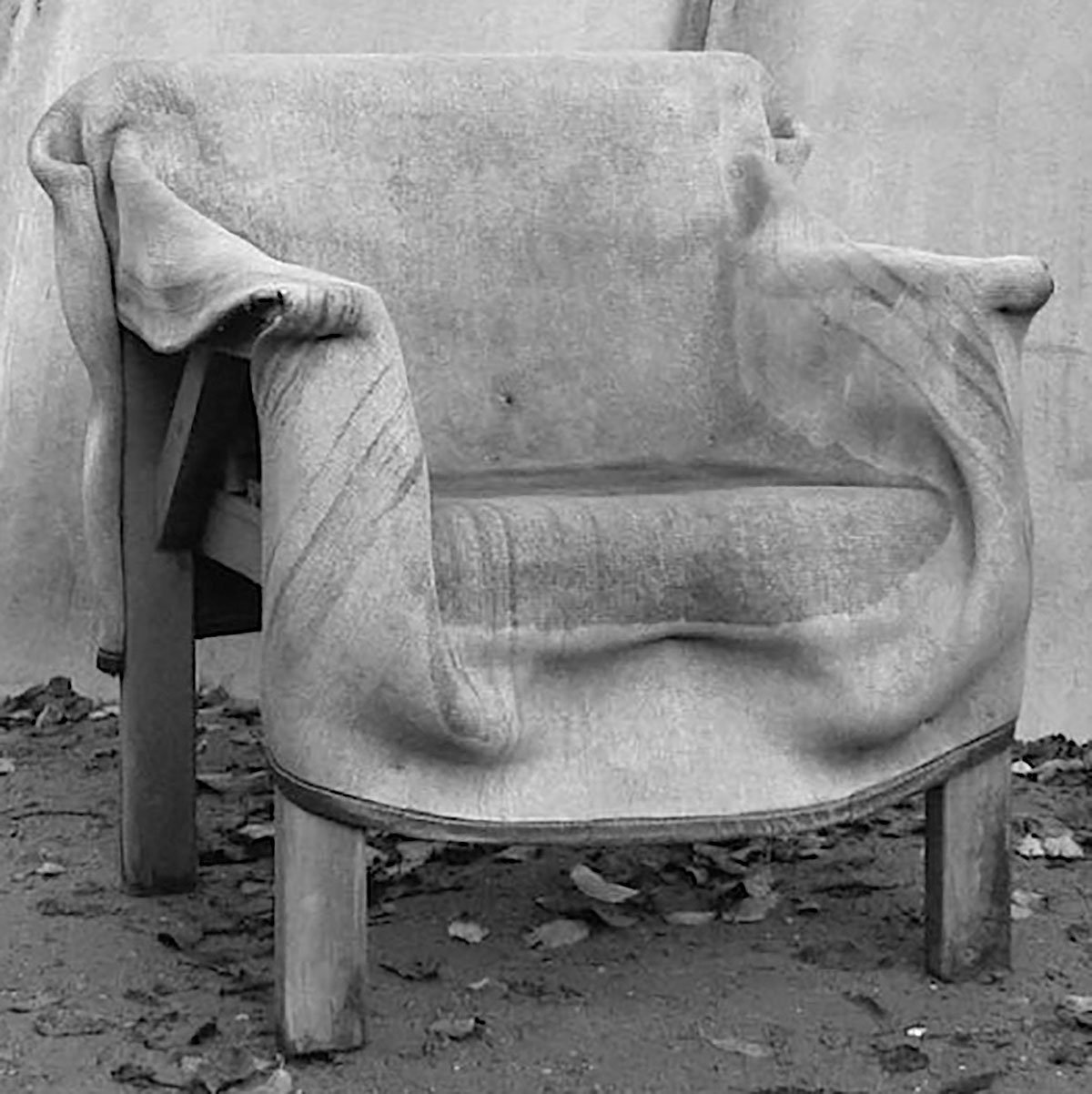
Improvised Life; a treasury of inspiring ideas states; Our new favourite fantasy material is Concrete Cloth: a flexible cement impregnated fabric that hardens when hydrated to from a thin durable water and fire proof concrete layer. This video and a pdf about it gave us lots of ideas. You can drape it over forms to mold it into shapes, like these sculptural chairs and sofas…the wet concrete cloth can be draped over cast-off or plastic furniture, until it hardens:
Endless designs:
When Quikrete ran it’s annual ‘One Bag Contest’ this free-form table was created, looking like a tablecloth without a table. Joey Eddington, an industrial design student at Brigham Young University, recently won the QUIKRETE One Bag Wonder 2.0 contest with his floating concrete ghost table

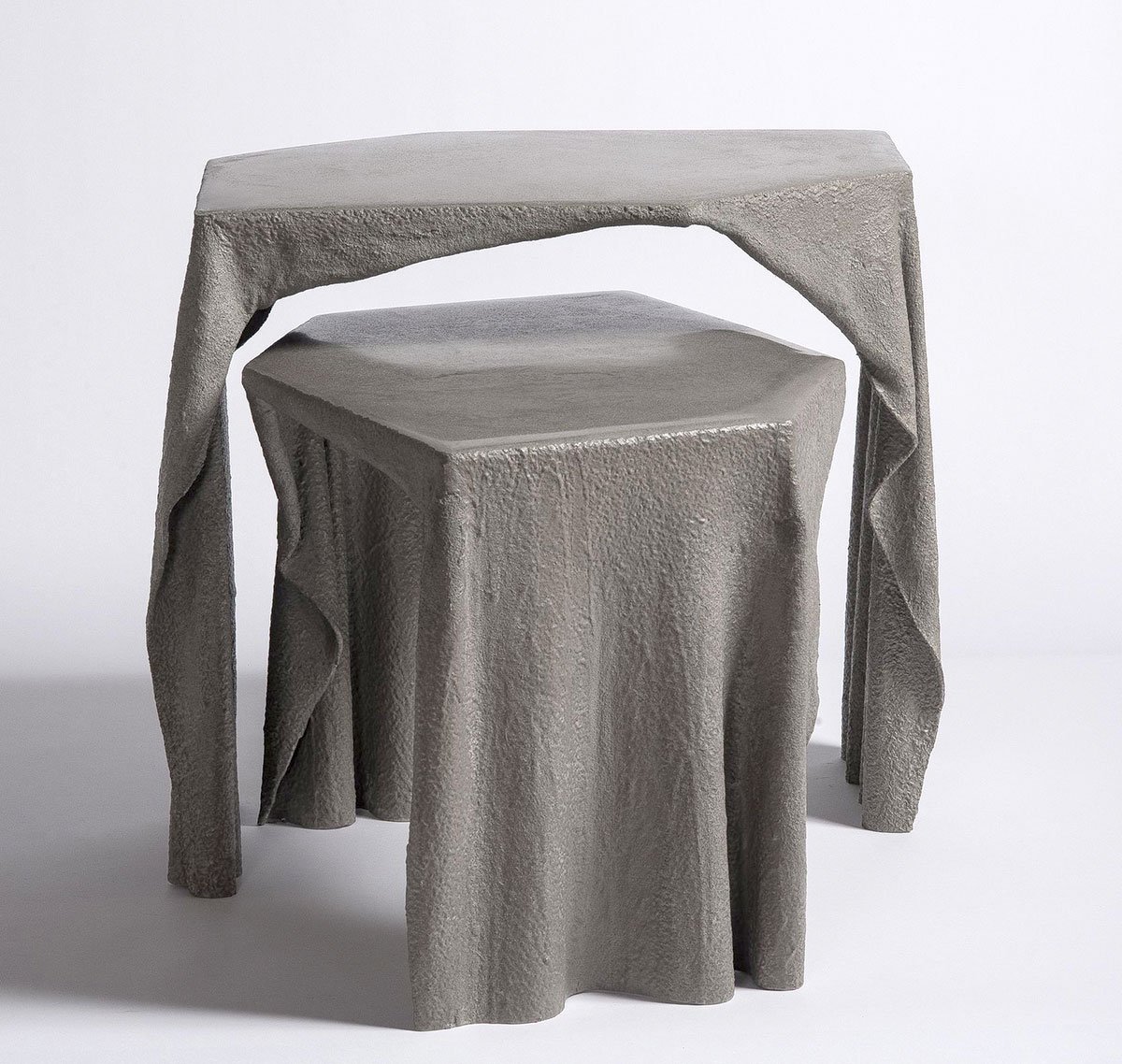
The same method as many of my draped concrete projects was used to make these simple tables. The choices of fabrics can make differences of texture, stability and also character. Smoothing of the cloth creates a finer texture. Brushing of the surface of the cloth will also create a smooth finish. Not every fabric will have good drape characteristics either…
How to Visualize a Design:
Before a design becomes real the idea needs to start to be visible. One of the easiest ways is to make sketches and drawings quickly by hand. As a traditionally trained artist I can function faster that way than in the digital form. Perhaps you prefer the method of making dimensional models.
Which Design Do you like?
Design #1 is a simple/cube table design. Cut the extra fabric so that it does not flare outward. Plan the lengths of sides to make sure it is well balanced & sufficiently supported. The gold colour would be a metallic brass finish to hopefully suggest the idea of fluid metal. The consistency of the slurry can impact the final finish. Using a sieve to make sure there are no lumps in the cement mortar helps.
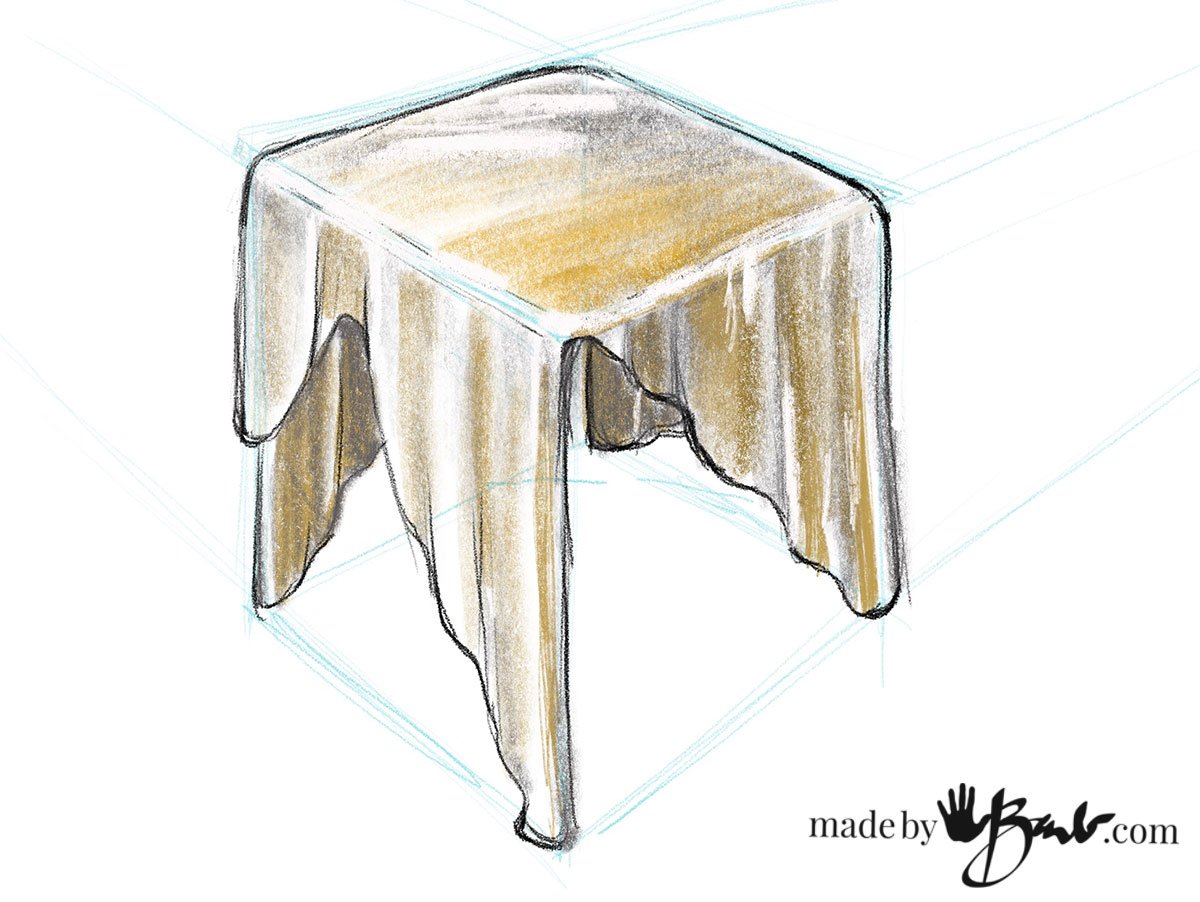
Design #2 Use a form that will be pulled out afterward (good prep is needed) this design uses strips of cement fabric around the form, overlapping but making sure of the overall side heights.
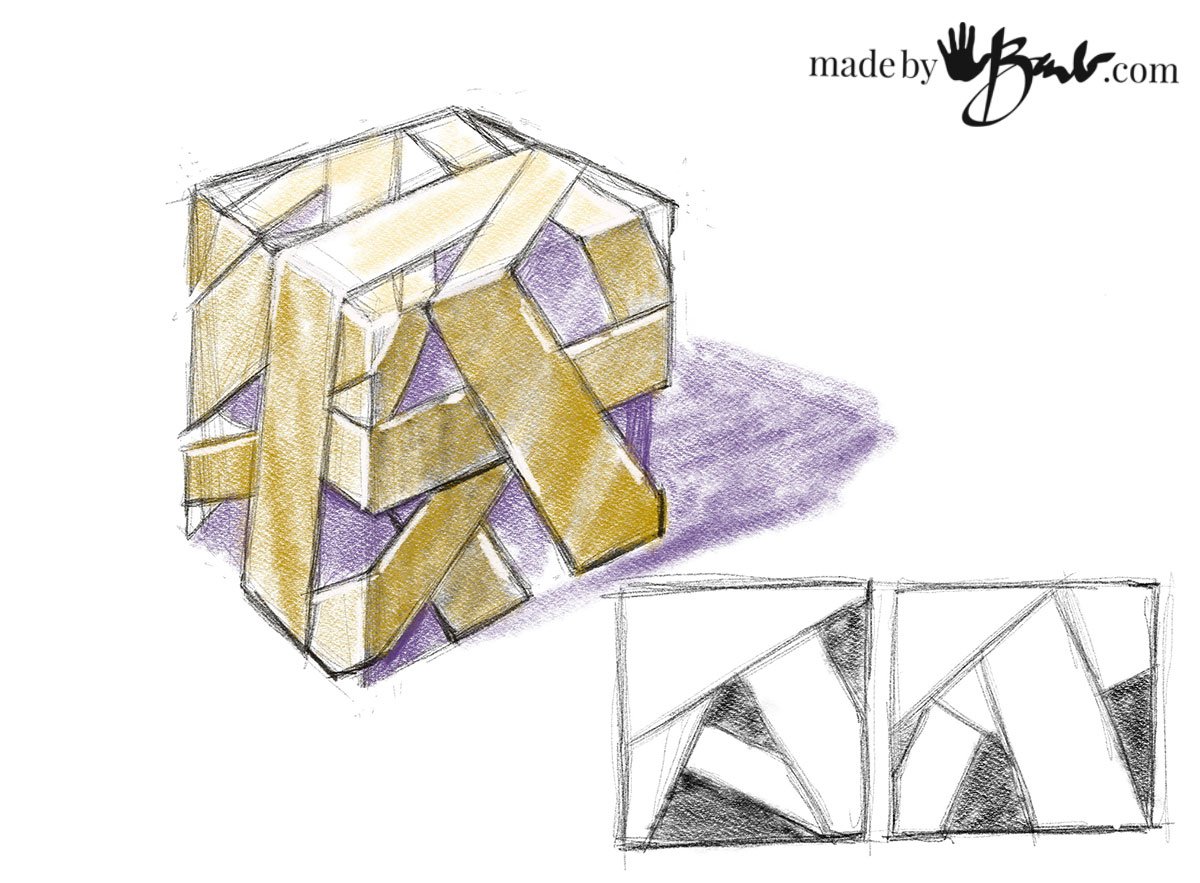
Design #3 A cylinder form will have a solid top but a very random wrapping around the form. This would be similar to by Concrete Garden Orbs. Gravity may be a challenge so the cross-wrapping will help.
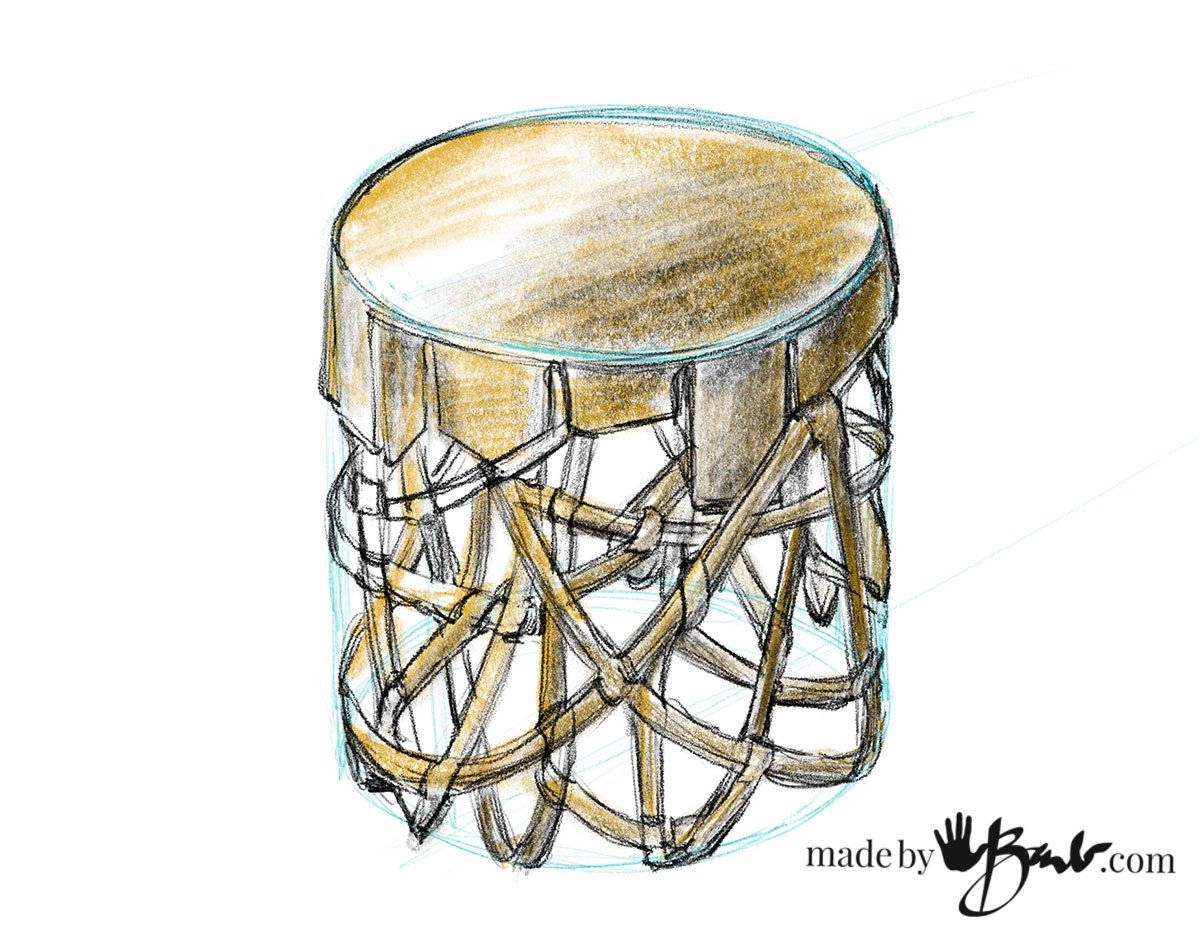
Design #4 Taking some cues from the fibre-filled comforters this simpler design may have some lofty polyester inside to keep the quilted feel of the baffles. Invert the shape as another option. Sewn squares like a quilted comforter are similar to the commercial use of inflation.
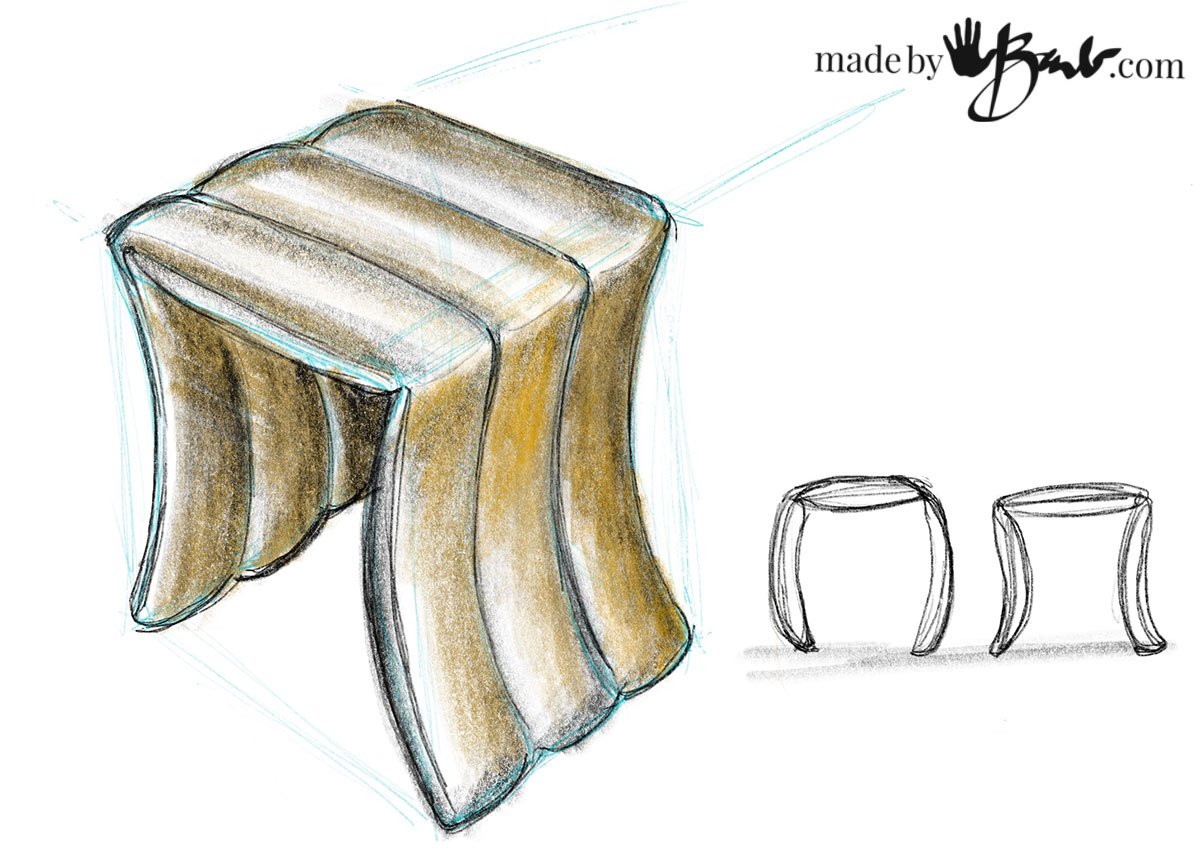
Design #5: Further simplification to the shapes of sheets of concrete cloth. I would like the recognition of concrete be a later part of the design.
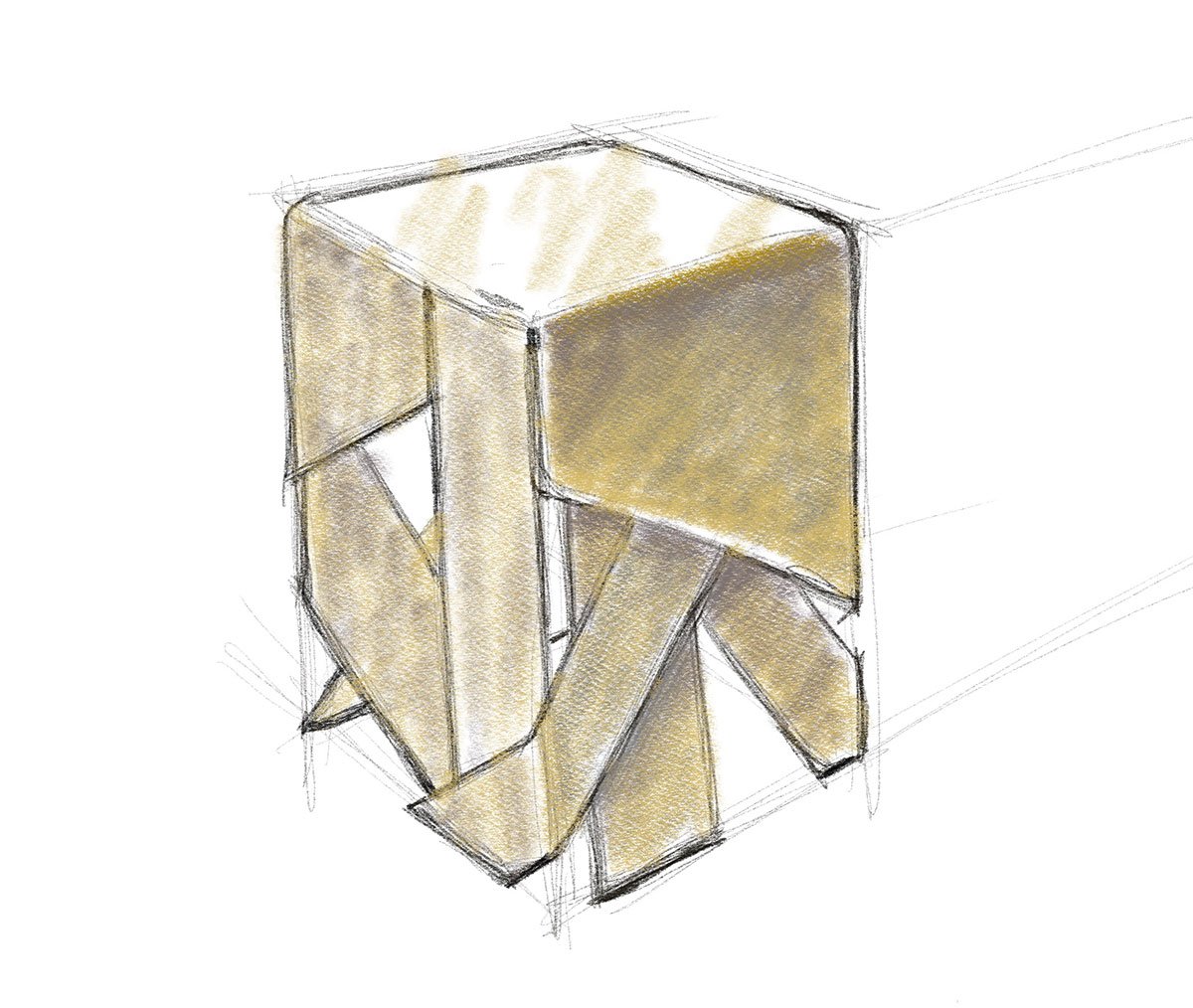
My Conclusions:
Fabric concrete, or concrete canvas, is a strong and durable material that combines the flexibility of a fabric with the strength and durability of concrete. Often the object is more lightweight than a conventional concrete poured in a form. Use concrete cloth to quickly and easily to build a variety of structures, that are cost-effective and sustainable options for construction projects. With its many applications and benefits, fabric concrete is a promising material for the future of construction and engineering, or even home projects. What will you make with your dry concrete mix?!
Your imagination knows no bounds! Been reading your stuff for a long time and have tried a couple of your projects, successfully, but this furniture idea is thrilling! So many possibilities. You have some engineering smarts in that big brain of yours too. Thanks for the inspiration and info.
Now that the kids are grown, I reflect back quite a bit. I always had a technical interest (loved math) and became a technical illustrator and taught perspective drawing. Teaching 3D model building and sewing for decades has brought a lot of skills together that seem so exciting in the concrete world. I can’t wait, always ideas tossing in my brain… Thanks for joining in my journey.
I am completely amazed by your projects. I can’t even figure out how to get dressed in the mornings and you are creating such amazing things in such amazing ways! I love to get your emails and they usually take me to your website where I can get lost very easily looking at your projects.
I really like to hear that there is a whole world of followers out there! I spend so much time making rather than looking at the analytics graphs. I know my collection is somewhat diverse but my ideas come from each other and eventually overlap. Thank you!
Wow Barb! I just love your ideas! This looks SO awsome! You are so inspiring!!
You are a very creative lady!
Linda